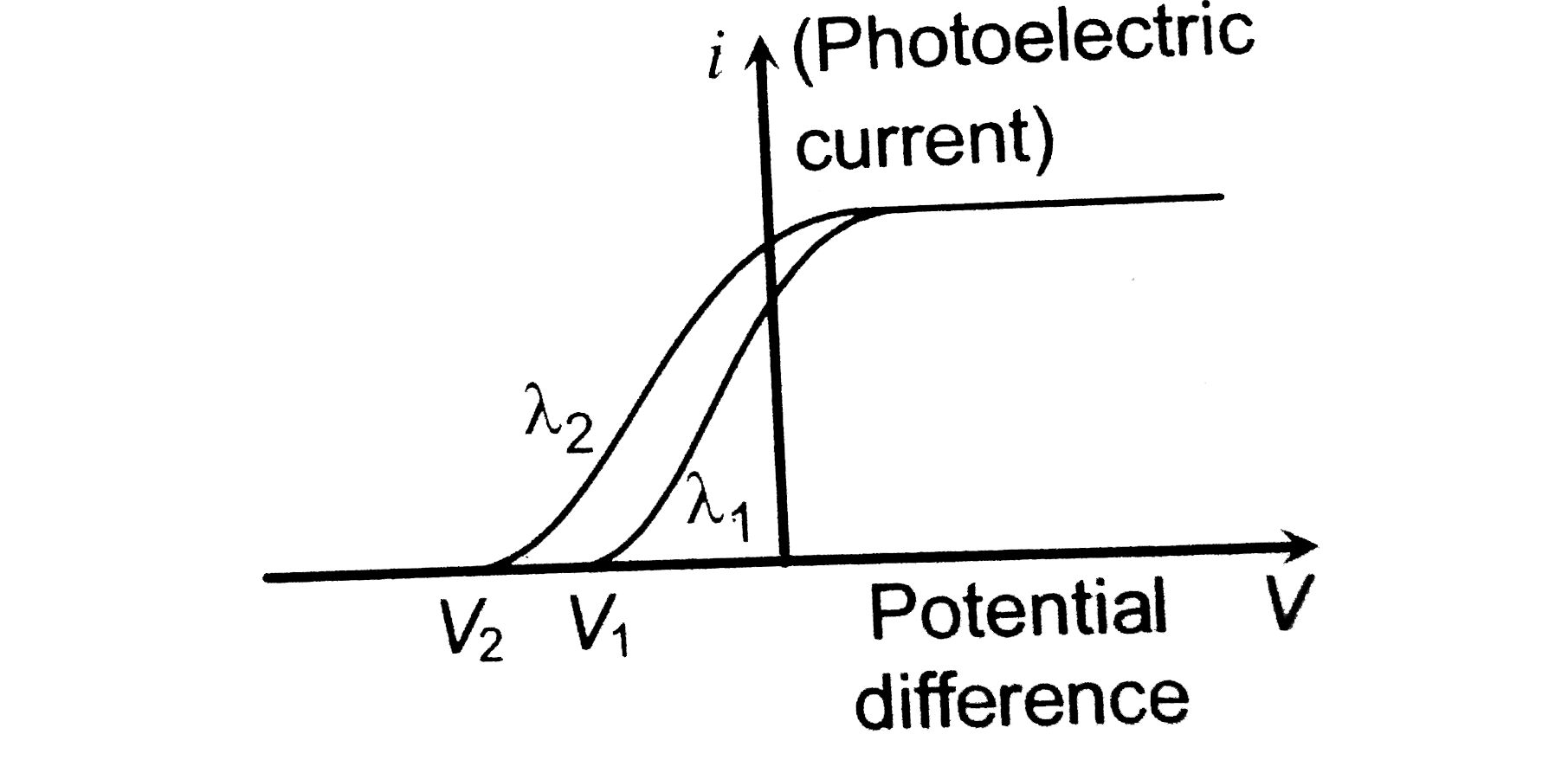If two pieces of caesium metal are supplied with energy respectively and then which of the following relation does not hold true?
The correct Answer is:B
To solve the problem, we need to analyze the relationships between the energies supplied to the cesium metal and how they relate to the work function and kinetic energy of the emitted electrons.
1. Understanding the Work Function:
The work function (φ) is the minimum energy required to remove an electron from the surface of a metal. For cesium, this value is constant regardless of the energy supplied.
2. Energy Supplied:
We are given two energies supplied to the cesium metal: hν1 and hν2, where ν1>ν2.
3. Kinetic Energy Calculation:
The kinetic energy (KE) of the emitted electrons can be calculated using the equation:
KE=hν−ϕ
Therefore, for the two energies, we have:
- For hν1:
KE1=hν1−ϕ
- For hν2:
KE2=hν2−ϕ
4. Comparing Kinetic Energies:
Since ν1>ν2, it follows that:
hν1>hν2
Subtracting the same work function φ from both sides gives:
hν1−ϕ>hν2−ϕ
Thus, we can conclude:
KE1>KE2
5. Analyzing the Options:
We need to determine which of the given relations does not hold true. The options typically involve comparisons of kinetic energies or energies supplied.
- Option 1: KE1>KE2 (This is true)
- Option 2: hν1−ϕ>hν2−ϕ (This is also true)
- Option 3: KE1=hν1−ϕ (This is true)
- Option 4: KE2=hν2−ϕ (This is true)
6. Identifying the Incorrect Relation:
The incorrect relation is the one that contradicts our findings. Since we established that KE1>KE2, any option suggesting otherwise would be incorrect.
Conclusion:
The relation that does not hold true is the one that suggests KE1 is not greater than KE2.
The work function (φ) is the minimum energy required to remove an electron from the surface of a metal. For cesium, this value is constant regardless of the energy supplied.
We are given two energies supplied to the cesium metal: hν1 and hν2, where ν1>ν2.
The kinetic energy (KE) of the emitted electrons can be calculated using the equation:
KE=hν−ϕ
Therefore, for the two energies, we have:
- For hν1:
KE1=hν1−ϕ
- For hν2:
KE2=hν2−ϕ
Since ν1>ν2, it follows that:
hν1>hν2
Subtracting the same work function φ from both sides gives:
hν1−ϕ>hν2−ϕ
Thus, we can conclude:
KE1>KE2
We need to determine which of the given relations does not hold true. The options typically involve comparisons of kinetic energies or energies supplied.
- Option 2: hν1−ϕ>hν2−ϕ (This is also true)
- Option 3: KE1=hν1−ϕ (This is true)
- Option 4: KE2=hν2−ϕ (This is true)
The incorrect relation is the one that contradicts our findings. Since we established that KE1>KE2, any option suggesting otherwise would be incorrect.
The relation that does not hold true is the one that suggests KE1 is not greater than KE2.
Similar Questions
Velocity of light ray in two media A and Bare v1andv2 respectively.
If vB=1.5VA, then which medium is denser?
View SolutionPhotoelectric emission is observed from a metal surface for frequencies v1 and v2 incidents radiations (v1>v2). If the maximum kinetic energy of the two electrons are in the ratio 1:2, then how is threshold frequency (v∘) experssed.
View Solution
Knowledge Check
x>2,y>−1 the which of the following holds good ?
Axy>−2Bxy<−2Cx>−2yDNone of theseEqual molecules of two gases are in thermal equilibrium. If Pa,PbandVa,Vb are their respective pressures and volumes, then which of the following relation is true?
APa≠Pb,Va=VbBPa=Pb,Va≠VbCPaVa=PbVbDPaVa=PbVbIf during an isothermal process certain gas is expanded from V1 to V2 . Then, which of the following would be true?
Aduring expansion temperature of the gas remains fixedBinternal energy of the gas remains fixedCenthalpy of the gas remains fixedDentropy of the gas remains fixed
Photoelectric emission is observed from a metallic surface for frequencies v1andv2 of the incident light. If the maximum value of kinetic energies of the photoelectrons emitted in the two cases are in the ratio n:1 then the threshold frequency of the metallic surface is
View SolutionIf V1,V2andV3 are the velocities of sound in steel ,water and vacuum respectively , which one of the following relations is correct ?
View SolutionThe velocity of sound waves in an ideal gas at temperatures T1KandT2 are respectively v1andv2 . The rms velocity of gas molecules at these two temperatures are w1ande2 , respectively then
View SolutionTwo cars of same mass are moving with velocities v1andv2 respectively. If they are stopped by supplying same breaking power in time t1andt2 respectively then v1v2 is
View SolutionIn the following diagram if V2>V1 then

View Solution